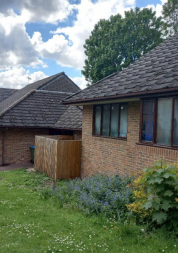Residential and Nursing Care Homes: Summary Report of Enter and View visits

In total, we visited the following 10 care homes in Royal Borough of Greenwich:
- Weybourne Care Home
- Puddingstone Grange Care Home
- Brook House Care Home
- Riverlee Residential and Nursing Home
- Ashgreen House Residential and Nursing Home
- Time Court Residential and Nursing Home
- The Oaks Care Home
- Charlton Park Care Home
- Meadows House Residential and Nursing Home
- Westcombe Park Nursing Home
As part of our Enter and View programme, we spoke to:
6 Family members and friends
10 Care Home Managers
28 Care Home staff members
40 Residents
In a few care homes, we were unable to speak to residents due to their limited capacity. In those instances, we undertook additional observations in the communal areas.
Healthwatch Greenwich would like to thank service providers, residents, service users, visitors and staff for their contribution to the Enter and View programme. Healthwatch Greenwich would also like to thank the Healthwatch volunteers and representatives who assist with the visits.
Key Findings
According to the 8 Care Home Quality Indicators, a good care home will:
1. Have strong, visible management
2. Have staff with time and skills to do their jobs
3. Have good knowledge of each resident and how their needs may be changing
4. Offer a varied programme of activities
5. Offer quality, choice and flexibility around food and mealtimes
6. Ensure residents can regularly see health professionals such as GPs, dentists, opticians or chiropodists
7. Accommodate residents’ personal, cultural and lifestyle needs
8. Be an open environment where feedback is actively sought and used
On our visits, overall, Greenwich care homes scored highly on each of the eight Care Home Quality Indicators. However, there are areas for further discussion and improvement.
Diversity of Care Home Residents
The Royal Borough of Greenwich (RBG) is an ethnically diverse borough with around 40% of the population from non-white ethnic groups. In our visits, the population of care home residents did not reflect the ethnic diversity of the local community3 . We are aware that the age range of groups differs and white British groups may have an older age profile than some non-white minority groups, however, is not clear if this is the main, or the only reason, for this disparity. While many homes, if specifically requested, made efforts to provide a culturally sensitive environment, for example, buying and cooking specific types of food, we also found that not all care homes adequately catered for specific cultural dietary needs.
It is not clear why there appears to be such a low proportion of non-white residents in the care homes we visited. However, further investigation to understand equity of access, appropriate service provision, referrals rates, levels of satisfaction with services received, and the extent to which care homes are perceived as culturally appropriate, or inappropriate, amongst non-white minority communities is needed.
Physical Environment
All the homes we visited provide a homely rather than institutional environment – the personalisation of resident rooms particularly contributed to this. Examples of good practise included:
- Consistent provision of memory boxes outside resident rooms displaying vignettes of the occupant’s life history, as well as practical information, such as the name of their keyworker, and information regarding personal preferences, e.g. favourite foods
- The option for families to provide their loved one with additional furniture or facilities (TV) for their room.
- The option for residents to decorate their rooms with a wallpaper of choice or in a preferred paint colour
Many care homes offered ensuite facilities to residents, protecting privacy and making it easier to sustain independence for as long as possible. However, a number of the homes we visited struggled with finding storage space, resulting in activity rooms used as overflow provision, and we found a small number of homes to be quite cluttered with items stored on floor space that could present a trip hazard.
Dementia-Friendly
All homes, in good weather, use their gardens to encourage social activity, maintain communication skills, and for opportunities to reminisce. Examples of good practise included:
- Recreating symbols of everyday life in the garden, such as a post box and a small shop.
- Encouraging residents to plan areas of the garden, plant and maintain small areas of garden.
- Using a sensory garden to stimulate the senses (sight, sound, smell, touch, and taste) to help residents with dementia to reconnect with lost memories.
- Having a garden ‘walking group’, encouraging residents, with limited mobility, to take gentle exercise by regularly walking in the garden.
Most homes had put in place some actions to make the environment more dementia friendly such as pictorial signage on the toilets and bathroom/shower room doors. However, beyond bathrooms/toilets, we did not see widespread use of dementia friendly signage throughout the care homes we visited.
In addition, activity timetables were not always displayed in a format accessible for residents with dementia. Flooring finishes, lighting and furniture, were not always colour coded to 8 make it easier for residents with dementia to navigate and not all handrails in communal areas were of contrasting colours to the walls, potentially making it harder for those with those with cognitive impairment to navigate.
Quality of Care
Feedback from both residents and relatives was, for the most part, very positive. Generally, the residents we spoke to told us that staff were kind and made them feel cared for, and relatives said they felt confident their loved one was well looked after.
We observed staff, across all homes, to be very attentive and caring. All homes demonstrated a commitment to ensuring that residents are provided with a wide range of activities to keep them both physically active and mentally stimulated. All homes employed activity coordinators and homes encourage residents and relatives to review and make suggestions. Many activities are linked to residents’ care plans, and residents are encouraged to take part to sustain skills and capabilities for as long as possible.
Most homes have a designated activity room, separate from the lounge or TV areas. However, in some homes, activity rooms are used as storage space for large items of furniture or the contents of other rooms while refurbishment is being carried out, severely limiting, or negating the opportunity for activities in the activity room. Unable to use activity rooms for their designated purpose, activities often took place in communal areas, limiting space available for residents who preferred not to take part.
In some care homes, we observed the practice of having multiple stimulants all at the same time. For example, in a single small communal area, the TV – with pictures, but no sound or subtitles and the stereo playing music, often quite loudly, – all at the same time. We observed that residents were not asked if they wanted the TV on, or if they wanted sound, or subtitles, on the TV to follow the programme, or if they wanted music on, or if they wanted these things on all at the same time. We found the sensory plethora confusing, and we do not know if the residents felt otherwise.
Apart from (paid for) hairdressing sessions, not all care homes had active and regular links with local groups, organisations, or facilities that could offer additional support 9 and stimulation for residents. Good examples included regular visits from local school children and invitations to local musicians and performers to put on events for residents.
We also found that, in some homes, external opportunities were limited, and residents rarely went out. In some cases, we were told that transport was a key barrier, as not all residents can walk very far or are able to take public transport. Other homes suggested that staffing was an issue as taking residents outside would need a very high staffing ratio, leaving the home short-staffed.
We are pleased to report that all care homes fully engaged with our visits. All homes had taken some action to address our recommendations from previous enter and view visits in 2017 and 2018.
Downloads
If you need this report in an alternative format, please email info@healthwatchgreenwich.co.uk

